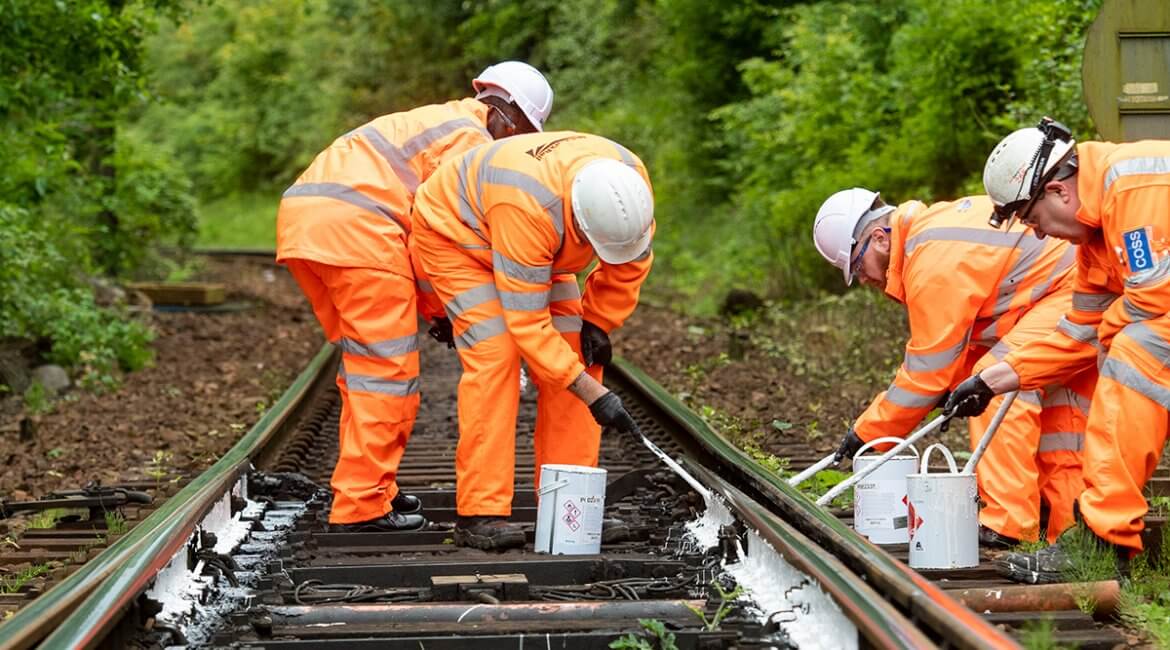So why don’t rail lines get hot in Europe? The truth is that they do! The only difference is that countries with hotter climates than ours stress their rails to withstand higher temperatures. In Italy, Switzerland and Spain steel rails are painted white to help keep them cool. Three quarters of the UK’s rail lines are on concrete sleepers which can with stand very high temperatures. But steel lines can break or expand. Rail lines in the UK are pre-stressed to help them resist the affects of heat and our rails have a stress-free temperature of 27 degrees which usually is the average temperature in our summer. In excessive heat conditions as we have saw the last few days then steel rails can expand up to 30cm per kilometre, or at worse break. If we stressed our rails to higher temperatures then they wouldn’t be safe in Winter and would break. This is why various Countries chose different temperature ranges based on their climate.
UK rail overhead line equipment is also built and designed to work on a certain temperature range. When the outside temperature reaches 30’ degrees the temperature of the rail can in some cases can be as much as 20’ higher. Indeed, the hottest rail day was the 18th July when the rail went up to 62’degrees. This is why Network Rail introduced emergency speed restrictions on the rails the last few days as a slower train means less pressure on the rail and that the rail is unlikely to buckle. Speed restrictions also help overhead lines which maybe sagging or feeling the strain of the heat.
With climate change being on the rise globally and that the UK now has hotter summers and warmer winters then Engineers may need to think about changing the standards of engineering to accommodate the future impact of these weather changes.
Image Credit Network Rail





